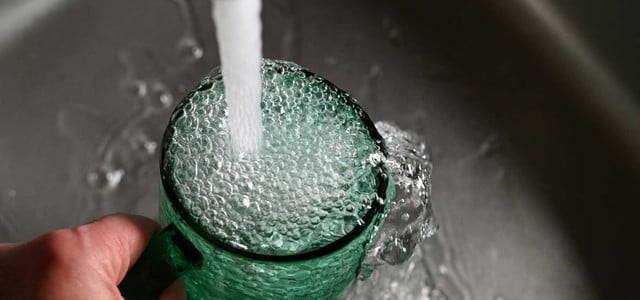
If you don’t want to absorb microplastics through tap water, you can simply filter it out with a kettle and filter – this trick circulates through the Internet. But is it really so easy and necessary in Germany at all? Utopia asked.
Online you come across a tip again and again: If you take care of microplastics in the tap water, you must simply boil it and let it run through a standard water filter or coffee filter. In this way, a large part of the existing microplastics can be removed. Is that correct?
Study recommends filtering microplastics from water
As a source, reference is made to a study from China, which was published in 2024 in specialist journal Environmental Science & Technology Letters. Researchers from the University of Guangzhou and the University of Jinan came to the shot that the boiling of hard water at least 80 percent of the nano and microplastics with a size between 0.1 and 150 μm. With soft water it was at least 25 percent.
The researchers advise to use kettles or gas flocks to cook the water. These options would have low energy consumption. They also recommend, for example, stainless steel filters to skim off the microplastics before drinking the water. Both kettle and filters should be free of plastic – presumably so that the water via the containers cannot be contaminated with plastic particles again. However, a commercially available water filter is often made of plastic and – unlike online often, would therefore not be suitable.
Tap water from Guangzhou, China was used for the study. The study also provides data in which concentrations microplastics occurs in Europe and Asia. The value for Asia is therefore 5.6 times above that for Europe.
The starting situation in both regions is very different. Does it even make sense in Germany to filter microplastics from tap water?
How much is drinking water loaded with microplastics?
Microplastics refer to tiny plastic particles with a size between 1 micrometer and 5 millimeters that are widespread in the environment. Even smaller particles are referred to as nanoplasty. These particles are created either by the decay of larger plastic objects (secondary microplastics) or are specifically manufactured for products such as cosmetics (primary microplastics).
According to the Federal Intutut for Risk Assessment (BfR), humans can come into contact with microplastics via various ways, including breathing air, food and drinking water. However, the World Health Organization (WHO) came to the conclusion in 2019 that there was no reliable information that indicated that microplastics in drinking water are a problem for human health. However, it also called on to explore the risks more precisely.
And what about tap water in Germany?
In Germany, tap water is one of the strictest controlled foods and has a consistently high quality. The Drinking Water Ordinance was last amended in June 2023 to implement new European guidelines and further improve the protection of drinking water. However, there is currently no limit for microplastics in drinking water. However, in March 2024, the European Commission decided to record standardized measurement methods in order to record the occurrence of microplastics in drinking water more reliably and to enable comparable data within the EU.
The TZW: DVGW technology center WATER is currently carrying out a research project to find out the extent to which microplastics occur in drinking water distribution networks. The project started in early 2025 and will continue until the end of 2027. Utopia asked about current knowledge.
Dagmar Uhl from the TZW gives the all -clear: “Based on information from the literature and all of our own measurement results we have, the load on drinking water in Germany with microplastics is extremely low, usually not detectable, and in any case significantly lower than the stress with microplastics that we are exposed to from other sources. ” She assumes that microplastics in drinking water are not a real problem. Safe statements are only possible if there are resilient measurement results.
Filter microplastics from tap water: Does that make sense in Germany?
In Germany, tap water is only slightly contaminated with microplastics. Should you still filter it to be on the safe side?
“The drinking water in Germany is strictly controlled and is sufficient. In our view, further treatment of the water in the household is not necessary, ”says Uhl.
If you want, you can of course use the kettle or stainless steel filter. According to Uhl, filtration methods are in principle well suited to remove any kind of particles from the water, including microplastics.
According to the study, this does not succeed 100 percent anyway. And: water cooking needs energy. Since there is no real indications for harmful stress, it is better to save the electricity.
Read more on utopia.de:
- 11 tips to avoid microplastics from clothing: this is how you do it right
- Hamburg breathes microplastics: This source pollutes the air the most
- Drink tap water on vacation? That applies abroad
** marked with ** or orange underlined Links to sources of supply are partially partner links: If you buy here, you will actively support Techzle\.com, because we will then receive a small part of the sales proceeds. More information.